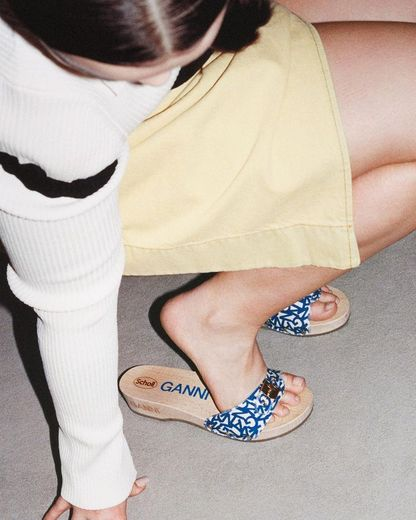What is the Difference Between Scholl and Birkenstock?
Do you often confuse Scholl with Birkenstock? Wondering how to tell the difference between these two shoe brands? Don’t worry! In these few lines, we’ll help you distinguish between these two iconic companies that take care of our feet.
It’s easy to mix them up because both are champions in their field with many similarities. In both cases, there is a special focus on comfort. Style is not sacrificed, but it never overshadows... the joy of walking. Step by step, comfort is key, beyond pleasure, there's a focus on well-being.
But enough of the generalities. Let’s dive into the story of these two footwear giants. Whatever your shoe size, we’re sure you’ll enjoy this read!
Scholl and Birkenstock: What Are the Origins of These Brands?
These franchises have now achieved near-international success, thanks to globalization! However, they originated in very different contexts.
- Scholl shoes owe their existence to William Mathias Scholl (hence the name). The adventure began in 1906 in the USA. Passionate about orthopedics (and a podiatrist himself), this visionary took on a significant challenge: his shoes aimed to relieve pain and help soothe foot problems. He expanded his mission in several ways, including a range of creams under the same label.
- As for Birkenstock, you need to go back to 1774. That year, Johannes Adam Birkenstock founded a small business as a cobbler. Unknowingly, he would leave an exceptional legacy to his descendants: the real breakthrough came in the early 1900s when Konrad Birkenstock developed a remarkably flexible plastic sole. The technology would evolve, but this is where it all began. Learn more with our article "The History of Birkenstock Mules".
These brief historical overviews already reveal some nuances. Conceptually, there are indeed differences. Let’s dive deeper into the topic as we continue our journey.
The Difference Between Scholl and Birkenstock: From Medical to Casual
Scholl takes a more clinical approach, focusing on functionality and practicality. The group’s podiatric roots are particularly evident through the innovative technologies featured in their shoes, such as GelActiv and Bioprint insoles.
In short, Scholl is mainly aimed at those following a medical program with specific needs.
Birkenstock, on the other hand, focuses on a more casual approach. Its legendary soles perfectly mold to the foot, and the breathability of the shoes is appreciated in the summer. Notably, plastic is no longer used—instead, cork has taken its place for ecological reasons. The company places a unique emphasis on durability.
Birkenstock caters to customers seeking familiar comfort, simplicity, and a relaxed usage context.
Scholl and Birkenstock: Major Differences Between These Two Icons
After these clarifications, we understand what separates these two giants. Of course, there are similarities. Both Scholl and Birkenstock aim to take care of the customer—or more precisely, their feet!
Their histories feature brilliant inventors who contributed to modernity. And that, quite literally, is a step forward. Progress also involves toes; the shoes of our two star brands protect, each in their way, these ten wonders.
However, looking closer, some obvious differences emerge. Scholl has taken a more clinical, technical, and medical direction, often recommended by experts. Birkenstock, meanwhile, leans into relaxation with its exceptional straps and soles.
Now, it’s up to you to choose the sandals, mules, clogs, slippers... or even ballet flats that suit you best! When combining the two universes, there’s no shortage of options.
Moreover, there’s no need to pick a “side”: Birkenstock’s strappy sandals will keep you comfortable during your downtime... until Scholl’s walking shoes take over when the hike begins! By exploring our selection, you’ll find everything you’re looking for.
Find even more information about Birkenstock with our articles :
- Where to buy Birkenstock?
- How to size Birkenstock?
- The history of Birkenstock mules
- How to Clean Birkenstocks
- Who Wears Birkenstocks? Discover the Birkenstock Audience
- How to Keep Your Birkenstocks from Smelling: Tips to Prevent Odors
- Why Do My Birkenstocks Make Noise? Common Causes and Solutions
- Which Birkenstock is the Most Comfortable?
- How to Wear Birkenstocks in Winter?


